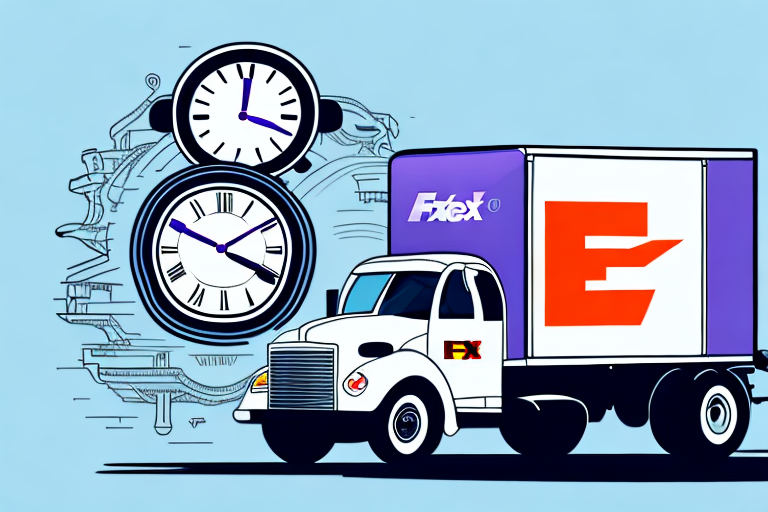How to Make the Most of Drop Off Shipping for Your Business
If you're a small business owner looking to streamline your shipping processes and cut costs, drop off shipping could be the solution you've been searching for. In this article, we'll explore everything you need to know about drop off shipping, including its benefits, different types of services available, how to choose the best one for your business, and tips for maximizing efficiency. We'll also discuss important considerations such as managing inventory, legal issues, and the future of drop off shipping.
The Benefits of Drop Off Shipping for Small Businesses
Drop off shipping offers numerous advantages for small businesses aiming to optimize their logistics and reduce expenses. Here are some key benefits:
Cost Savings
One of the primary benefits of drop off shipping is its potential to save small businesses money. By utilizing drop off points, businesses can leverage collective shipping rates, often resulting in lower costs compared to traditional shipping methods. According to the Statista report on shipping costs, businesses can reduce their shipping expenses by up to 20% through optimized shipping strategies.
Time Efficiency
Drop off shipping eliminates the need for businesses to schedule pickups or manage in-house shipping logistics. By dropping packages at designated locations, businesses can save valuable time, allowing them to focus on core operations. This streamlined process can significantly enhance overall productivity.
Types of Drop Off Shipping Services
Understanding the various types of drop off shipping services is crucial for selecting the right option for your business needs. Here are the most common types:
Carrier Drop Off
This is the most basic form of drop off shipping, where you drop your packages at a carrier’s location such as FedEx or UPS. This option typically offers a range of shipping speeds and tracking capabilities, providing flexibility based on your delivery requirements.
Courier Drop Off
Similar to carrier drop off, courier drop off involves smaller, locally-owned courier services. This option is ideal for businesses requiring same-day or next-day delivery within specific geographic areas. Additionally, courier services often offer competitive rates for smaller shipments.
Shipping Center Drop Off
Shipping center drop off allows businesses to leave packages at dedicated shipping stores such as The UPS Store or FedEx Office. These centers typically provide comprehensive shipping solutions, including packaging assistance and extended hours for greater convenience.
Choosing the Best Drop Off Shipping Service for Your Business
Selecting the right drop off shipping service involves evaluating several factors to ensure it aligns with your business needs and customer expectations.
Factors to Consider
- Shipping Speed: Determine the delivery timelines that best suit your customers' needs.
- Tracking Capabilities: Ensure the service provides reliable tracking to monitor shipments in real-time.
- Package Restrictions: Check for any size or weight limitations that may affect your shipping.
- Pricing: Compare costs to find a service that offers competitive rates without compromising quality.
Service Provider Reputation
Research the reputation of potential service providers by reading reviews and testimonials. Reliable providers with a proven track record can enhance customer satisfaction and reduce the likelihood of shipping issues. Resources like the Better Business Bureau can offer valuable insights into service reliability.
Streamlining Your Drop Off Shipping Process and Maximizing Efficiency
Efficiency in your shipping process can lead to significant time and cost savings. Here are some strategies to enhance your drop off shipping operations:
Implementing Technology
Invest in a reliable label printer and use shipping software that integrates with your e-commerce platform. This integration can automate label generation and tracking number assignments, reducing manual errors and speeding up the shipping process.
Standardizing Packaging
Using standardized packaging materials can minimize the time required to pack and label each shipment. Consistent packaging also ensures that products are securely protected during transit, reducing the risk of damage.
Inventory Management
Set up an efficient system for tracking and managing inventory. Tools like TradeGecko can help you maintain accurate stock levels and automate reorder processes, ensuring you never run out of essential products.
Financial Advantages of Using Drop Off Shipping
Drop off shipping not only reduces shipping costs but also offers broader financial benefits to small businesses.
Cost-Effectiveness
By leveraging the collective purchasing power of multiple businesses, drop off shipping providers can negotiate better rates with carriers. This often results in substantial savings on shipping expenses.
Savings on Overhead Expenses
Outsourcing shipping processes to a third-party provider can help businesses reduce overhead costs associated with warehousing and staffing. This allows businesses to allocate resources to other critical areas such as product development and customer service.
Future Trends in Drop Off Shipping
The drop off shipping industry is continuously evolving to meet the demands of the modern marketplace. Here are some emerging trends and predictions:
Sustainability Initiatives
There is a growing emphasis on sustainability within the shipping industry. Many providers are investing in fleet electrification and alternative fuels like hydrogen and biofuels to reduce carbon emissions and promote eco-friendly practices.
Technological Advancements
Advancements in technology, including the use of artificial intelligence and machine learning, are enhancing the speed and accuracy of deliveries. These technologies enable more sophisticated tracking and fulfillment solutions, improving overall shipping performance.
Common Mistakes to Avoid When Using Drop Off Shipping Services
While drop off shipping offers numerous benefits, avoiding common pitfalls is essential for a smooth shipping experience.
- Choosing Based Solely on Price: While cost is an important factor, it shouldn't be the only consideration. Ensure the provider is reliable and has a good reputation for timely deliveries.
- Poor Packaging: Proper packaging is crucial to protect your products during transit. Use appropriate materials to prevent damage and ensure the safety of your shipments.
- Inaccurate Measurements: Incorrectly weighing or measuring packages can lead to unexpected costs or delivery delays. Always use precise tools to determine package dimensions and weight.
Understanding the Legal Issues in Drop Off Shipping
Being aware of legal considerations is vital when utilizing drop off shipping services. Here are some key points to keep in mind:
Liability for Lost or Damaged Packages
Understand the terms and conditions of your chosen shipping provider to clarify responsibilities in case of lost or damaged packages. Ensure you have adequate insurance coverage to protect your shipments.
Compliance with International Shipping Regulations
If you plan to ship internationally, familiarize yourself with the shipping regulations of the destination countries. Partnering with a provider experienced in international logistics can help navigate these complexities effectively.
Case Studies: Success Stories of Businesses That Have Utilized Drop Off Shipping Effectively
Real-life examples can illustrate the effectiveness of drop off shipping for small businesses. For instance, Warby Parker utilizes a combination of carrier and shipping center drop off services to fulfill orders across the US. By outsourcing their shipping processes, Warby Parker has concentrated on product quality and customer service while offering affordable and reliable shipping options.
Comparison of Costs between Traditional Delivery and Drop Off Shipping
Comparing traditional delivery methods with drop off shipping highlights potential cost savings. According to a FedEx case study, a small business using a combination of carrier and shipping center drop off services saved up to 45% on shipping costs compared to traditional delivery methods.
How Social Media Can be Utilized to Promote Your Business Through Drop Off Shipping
Leverage social media platforms to showcase your drop off shipping practices. Highlighting your efficient and cost-effective shipping options can attract customers and build trust. Sharing customer testimonials and success stories on platforms like Facebook and Instagram can further enhance your brand's credibility and reach.
In Conclusion
Drop off shipping can be a transformative strategy for small businesses aiming to optimize their shipping processes and reduce costs. By selecting the right provider, implementing efficient shipping practices, and staying informed about legal considerations and industry trends, you can harness the full potential of drop off shipping to propel your business forward.




















